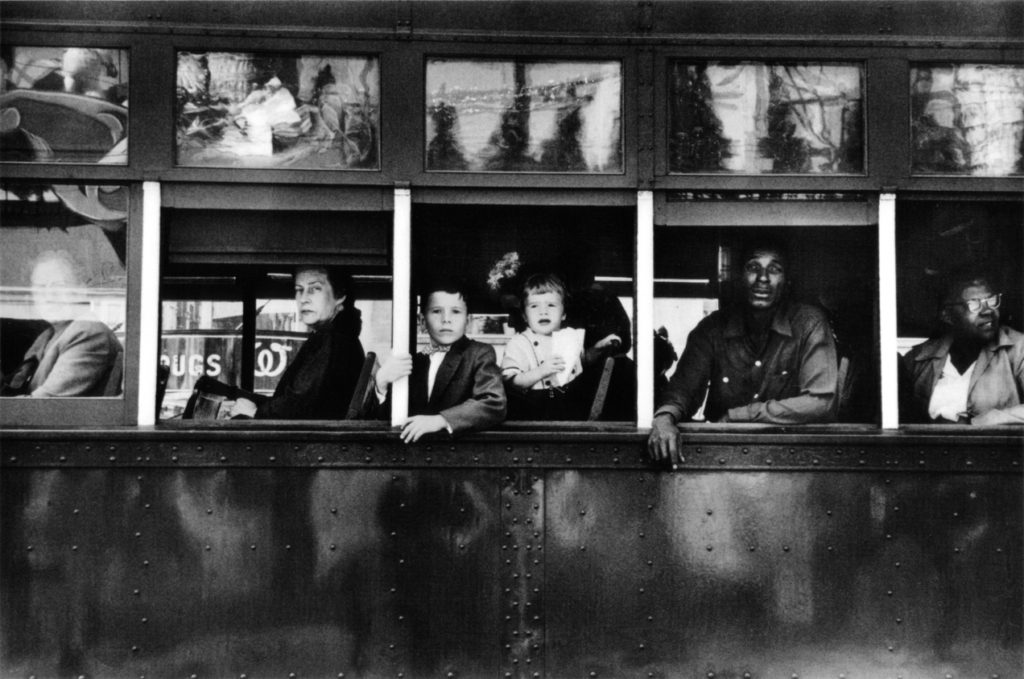
Technical: this image is very sharp and still, this suggests as fast shutter speed was used. As this photograph is a style of environmental portraiture, natural lighting would have been used so the photographer could easily move around depending on the scene. Documentary photography generally means the photo has not been edited because it is meant to show the truth. we can see a high contrast in the photograph, there are extremely white areas for example the four lines on the edge of each window which draw our eyes to the passengers. there are also very dark shaded areas which help to dramatize the image and add depth. The depth of field is interesting because we get the idea that the people in tram are looking directly at the photographer, this suggests he was close to the subject.
Visual: This is a black and white photo because at the time colour photography was not commonly used, however I think this adds depth and some interesting details to the photo. The dream America was thought of as bright and colourful, the idea that all of the colour had been stripped from this image could suggest that black and white reveals the truth. The tone of this photo is very dark which helps the few light areas stand out even more. Although most of the detail in this image is in the central horizontal third there is a lot of texture coming from the bottom of the image. the dents in the metal show imperfections and give the image a more urban and industrial look. This image has a clear line of symmetry down the middle, the regularity of the tram windows helps us to seen the difference between the people in them. The windows also line up with the rule of third which give the photo a very regular and organised look, this links to

Excellent start to the course with a range of interesting, informative and visually stimulating blog posts. Now aim to analyse and interpret each photo assignment and develop your artist case studies in order to make final selections over the next few weeks. Well done!